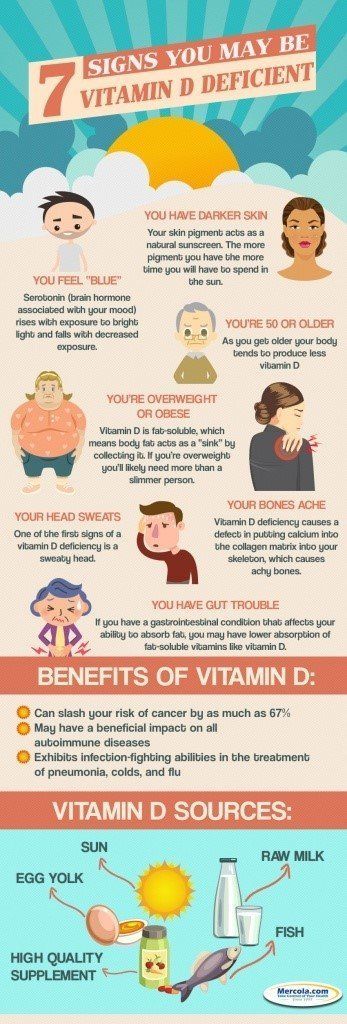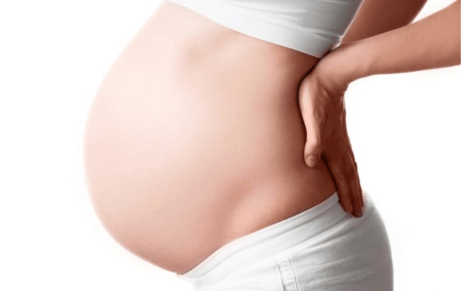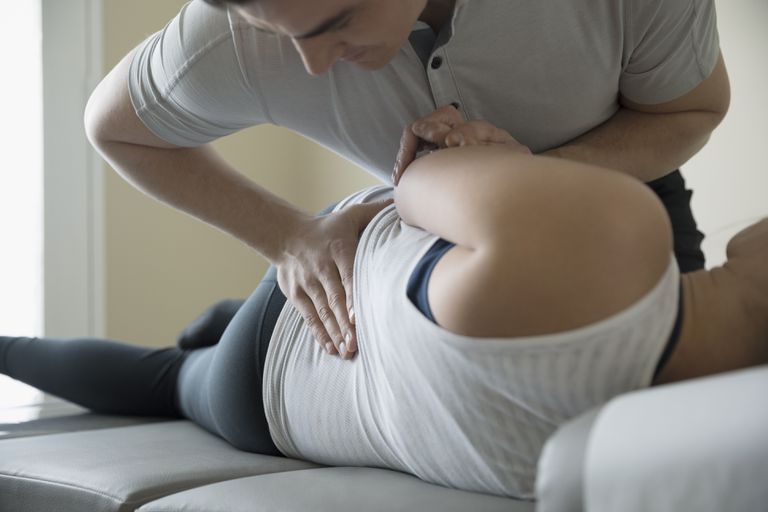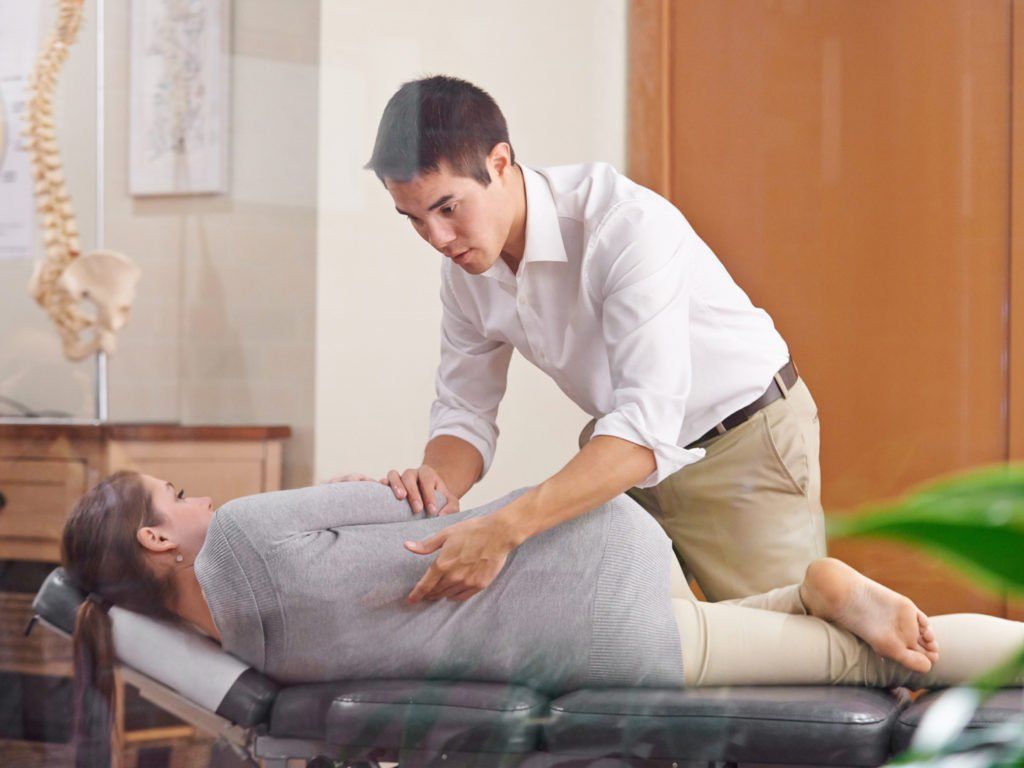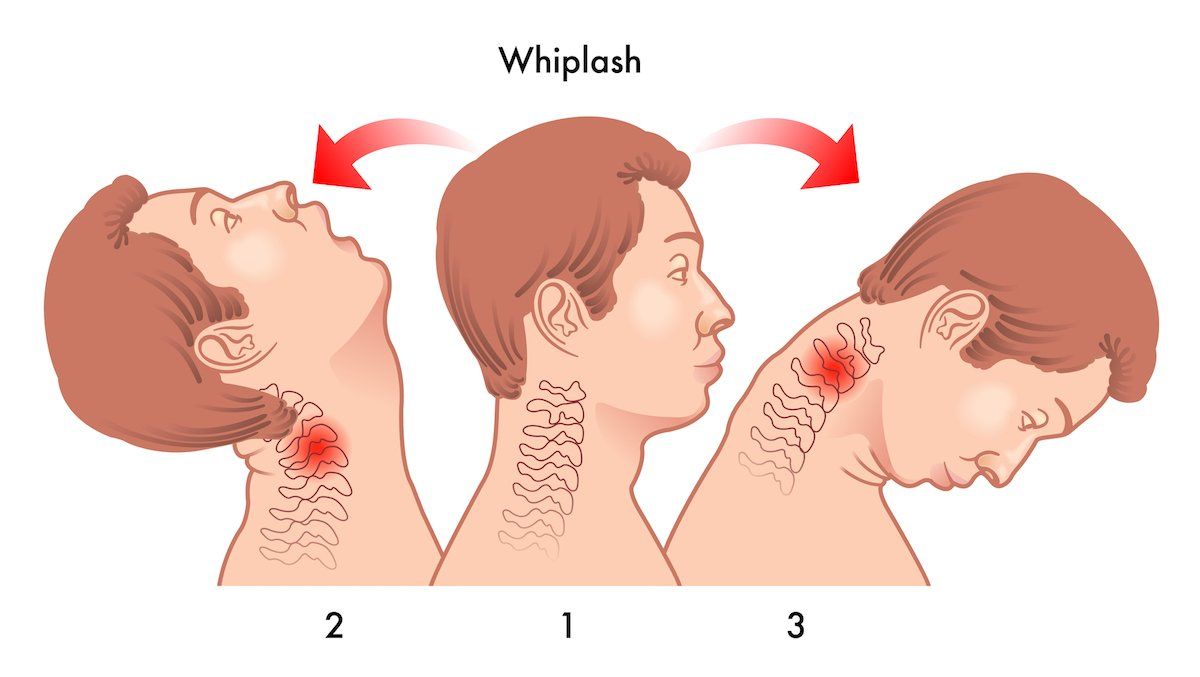September 16, 2020
(Source: circleofdocs.com ) Making the Case against Late Whiplash It seems that 1999 was a banner year for the whiplash naysayers. In addition to the barriers such literature imposes for advances in automotive safety, it provides an ongoing source of grist for the ever-polarized medicolegal mill. Readers may recall my criticisms of the first Lithuanian paper of 1996 (reference 10), which appeared in DC that year. The authors revisited this problem of late whiplash more recently. Subsequently, a spate of particularly bad literature has appeared (chiefly from a Dr. Ferrari) that uses, as its chief foundation, these two fundamentally flawed misadventures of science. In this article, I’ll explore the major problems with the recent (1999) Lithuanian paper and juxtapose them with the 1996 paper. The Prevalence of Chronic Cervical Zygapophysial Joint Pain After Whiplash In this population, cervical zygapophysial joint pain was the most common source of chronic neck pain after whiplash. Chronic Cervical Zygapophysial Joint Pain After Whiplash: A Placebo–Controlled Prevalence Study Cervical zygapophysial joint pain is common among patients with chronic neck pain after whiplash. This nosologic entity has survived challenge with placebo-controlled, diagnostic investigations and has proven to be of major clinical importance. Low Speed Rear End Impacts: Vehicle and Occupant Response In low impact collisions, there are usually no skid marks, minor or no visible damage to the vehicle. There is a lack of relationship between occupant injury vehicle speed and/or damage. There does not appear to be an absolute speed or damage to a vehicle for a person to experience injury. Crash tests indicate a change of vehicle velocity of 4km/h (2.5 mph) may produce occupant symptoms. Vehicle damage may not occur until 14-15km/h (8.7 mph). Occupant soft tissue and joint injuries resulting from low speed vehicle collisions respond positively to afferent stimulation of mechanoreceptors. The diagnosis of the occupant injuries is reliant upon standard orthopedic neurological testing, the autonomic concomitant signs and qualitative sensory testing. A Review and Methodologic Critique of the Literature Refuting Whiplash Syndrome The validity of whiplash syndrome has been a source of debate in the medical literature for many years. Some authors have published articles suggesting that whiplash injuries are impossible at certain collision speeds; others have stated that the problem is psychological, or is feigned as a means to obtain secondary financial gain. These articles contradict the majority of the literature, which shows that whiplash injuries and their sequelae are a highly prevalent problem that affects a significant proportion of the population. How Crash Severity in Rear Impacts Influences Short- and Long-term Consequences to the Neck The two crashes which resulted in long-term disabling neck injuries had the highest peak acceleration (15 and 13 x g), but not the highest change of velocity. The crash tests showed that a tow-bar may significantly affect the acceleration of the car as well as that of the occupant. According to real-life crashes, a tow-bar on the struck car increased the risk of long-term consequences by 22% but did not affect the risk of short-term consequences. Awareness Affects the Response of Human Subjects Exposed to a Single Whiplash-Like Perturbation The larger retractions observed in surprised females likely produce larger tissue strains and may increase injury potential. Aware human subjects may not replicate the muscle response, kinematic response, or whiplash injury potential of unprepared occupants in real collisions. Correlating Crash Severity With Injury Risk, Injury Severity, and Long-term Symptoms In Low Velocity Motor Vehicle Collisions A substantial number of injuries are reported in crashes of little or no property damage. Property damage is an unreliable predictor of injury risk or outcome in low velocity crashes. The MIST protocol for prediction of injury does not appear to be valid. Significant Spinal Injury Resulting From Low-level Accelerations: A Case Series of Roller Coaster Injuries The results of this study suggest that there is no established minimum threshold of significant spine injury. The greatest explanation for injury from traumatic loading of the spine is individual susceptibility to injury, an unpredictable variable. Impact of Motor Vehicle Accidents on Neck Pain and Disability in General Practice This study showed that the percentage of patients who had been involved in an MVA and reported continuous neck pain was significantly higher than for those patients with other self-reported causes of neck pain. Reported prevalences of continuous neck pain in patients who had experienced MVAs vary widely in the literature and seem to consist of two different groups of figures — lower prevalence figures of chronic neck pain range between 8% and 24%, [21] while higher reported figures range from 43% up to 66%. [22, 23] Marshall reported that even 80% of patients experienced neck discomfort after an MVA. The Failure of Standard Orthopedic and Neurologic Tests As we mentioned earlier, the orthopedic and neurologic tests we typically perform are not sensitive to what produces pain in the whiplash patient. These tests, which have been designed to assess the ventral ramus of the peripheral nerve, are not usually very sensitive to the structures innervated by the dorsal ramus which are typically involved. In the next article we will cover a better way to assess patients who are involved in motor vehicle accidents, and which tests are more sensitive for the tissues which are lesioned! Chiropractic Care for Spinal Whiplash Injuries Studies on the efficacy of chiropractic care for patients suffering with pain secondary to whiplash injury are appearing in the literature. In 1996, Woodward et al. published a study in Injury on the efficacy of chiropractic treatment of whiplash injuries. [1] The authors of this study were from the Department of Orthopedic Surgery in Bristol, England. In 1994, Gargan and Bannister published a paper on the recovery rate of patients with whiplash injuries and found that if patients were still symptomatic after three months, there was almost a 90% chance they would remain so. [2] No conventional medical treatment has been shown to be effective in these established chronic whiplash injury patients. [3-4] However, most DCs treating whiplash injury patients have empirically found high success rates in the recovery of these types of patients. How Have Chiropractors Fared in Recent Years with Whiplash Cases? Chiropractors have been actively treating whiplash soft-tissue injuries for decades. This article explores how the chiropractic profession has fared in recent years compared to medical doctors and physical therapists. These comparisons will illustrate the percentage of claimants seeing the various providers in five-year increments. This paper shows that the chiropractic profession continues to have a healthy upward growth trend, whereas the number of claimants seeing MDs and PTs has declined or has had little growth in recent years. Long-Term Consequences of Whiplash: Allergy; Breathing, Digestive and Cardiovascular Disorders; Hypertension and Low Back Pain A recent paper out of Canada takes an intriguing look into what may be some of the less recognized features of the long–term consequences of whiplash trauma – a condition perhaps more rightfully referred to as cervical acceleration/deceleration (CAD) trauma. The authors, using data obtained by health surveys, attempted to correlate a history of neck injury from motor vehicle crashes (MVC) with chronic neck pain. The Risk of Injury for Children Exposed to Whiplash Trauma Less than two percent of the literature about whiplash is devoted to children. When I wrote the first edition of my textbook in 1988,1 I cited an older German study placing the risk for children at approximately one-sixth the risk of adults. By the time the second edition was published in 1995, a Swedish study had since been published putting the risk proportion in children closer to two-thirds that of adults. Cervical zygapophyseal joint pain patterns. I: A study in normal volunteers The pain patterns evoked by stimulation of normal cervical zygapophyseal joints were determined in five volunteers. Under fluoroscopic control, joints at segments C2-3 to C6-7 were stimulated by distending the joint capsule with injections of contrast medium. Each joint produced a clinically distinguishable, characteristic pattern of pain, which enabled the construction of pain charts that putatively could be of value in determining the segmental location of symptomatic joints in patients presenting with cervical zygapophyseal pain. The rate of recovery following whiplash injury Fifty consecutive patients with soft-tissue neck injuries following rear end collisions were studied prospectively to assess their rate of recovery. Patients were seen within 5 days of the accident, after 3 months, 1 year and 2 years, and their symptoms were classified into one of four groups (A, asymptomatic; B, nuisance; C, intrusive; D, disabling). Fourteen of 15 patients (93%) who were asymptomatic after 3 months remained symptom-free after 2 years. Of 35 patients with symptoms after 3 months, 30 (86%) remained symptomatic after 2 years. The Endothelium and Cardiovascular Disease — A Complex Relation Cardiovascular disease accounts for considerable mortality and morbidity in Western countries. Most of the common forms of cardiovascular disease, such as atherosclerosis, are caused by functional and structural changes in the blood-vessel wall. These changes include abnormal vasoconstriction, enhanced interaction of blood cells with the vessel wall, activation of coagulation mechanisms, and migration and proliferation of vascular smooth-muscle cells1-3. Depending on the stage and location of the disease, one or more of these factors predominate. These vascular abnormalities have an important role in the pathogenesis of angina pectoris, myocardial infarction, stroke, and vascular forms of renal failure. Long-term Outcome After Whiplash Injury: A 2-year Follow-up Considering Features of Injury Mechanism and Somatic, Radiologic, and Psychosocial Findings Previous studies, however, focused on somatic symptoms on the one hand or considered only psychological or neuropsychological variables on the other hand, often in loosely defined or selected groups of patients. No study so far has analyzed the long-term outcome in a nonselected group of patients using a clear injury definition considering patient history; somatic, radiologic, and neuropsychological findings; and features of the injury mechanisms assessed soon after trauma and during follow-up. With regard to baseline findings the following significant differences were found (on this cohort): Symptomatic patients were older, had higher incidence of rotated or inclined head position at the time of impact, had higher prevalence of pretraumatic headache, showed higher intensity of initial neck pain and headache, complained of a greater number of symptoms, had a higher incidence of symptoms of radicular deficit and higher average scores on a multiple symptom analysis, and displayed more degenerative signs (osteoarthrosis) on X ray. Conservative management of mechanical neck pain: systematic overview and meta-analysis Twenty four randomised clinical trials met the selection criteria and were categorised by type of intervention: nine used manual treatments; 12 physical medicine methods; four drug treatment; and three education of patients (four trials investigated more than one form of intervention). Chiropractic Treatment of Chronic ‘Whiplash’ Injuries Twenty-six (93 per cent) patients improved following chiropractic treatment (U = 34, P < 0.001). The encouraging results from this retrospective study merit the instigation of a prospective randomized controlled trial to compare conventional with chiropractic treatment in chronic ‘whiplash’ injury. Whiplash Associated Disorders: Redefining Whiplash and Its Management by the Quebec Task Force ~ A Critical Evaluation The validity of the conclusions and recommendations of the Quebec Task Force regarding the natural course and epidemiology of whiplash injuries is questionable. This lack of validity stems from the presence of bias, the use of unconventional terminology, and conclusions that are not concurrent with the literature the Task Force accepted for review. Although the Task Force set out to redefine whiplash and its management, striving for the desirable goal of clarification of the numerous contentious issues surrounding the injury, its publications instead have confused the subject further. Motion Analysis of Cervical Vertebrae During Whiplash Loading The cervical spine is forced to move from the lower vertebrae during rear-end collisions. This motion completely differs from normal extension motion and is probably related to the injury mechanism. Whiplash Update: New Research About Chiropractic Utilization in America It is important for the chiropractic profession to stay current with claim behavior in the United States, including treatment costs, number of office visits, types of injuries, and use of diagnostic procedures. This is particularly true with respect to motor vehicle collision injuries. This information lets doctors of chiropractic evaluate their practice profiles and determine how national figures apply to their practices. Cervical Nonorganic Signs: A New Clinical Tool to Assess Abnormal Illness Behavior in Neck Pain Patients: A Pilot Study For many years, the lumbar nonorganic signs (developed by Waddell and colleagues) have been a useful screening tool in the assessment of abnormal illness behavior in the low back pain population. For the first time, a group of cervical nonorganic signs have been developed, standardized, and proven reliable. Effect of Eliminating Compensation for Pain and Suffering on the Outcome of Insurance Claims for Whiplash Injury The incidence and prognosis of whiplash injury from motor vehicle collisions may be related to eligibility for compensation for pain and suffering. On January 1, 1995, the tort–compensation system for traffic injuries, which included payments for pain and suffering, in Saskatchewan, Canada, was changed to a no–fault system, which did not include such payments. To determine whether this change was associated with a decrease in claims and improved recovery after whiplash injury, we studied a population–based cohort of persons who filed insurance claims for traffic injuries between July 1, 1994, and December 31, 1995. Prognosis Following a Second Whiplash Injury Five percent of the population have suffered a whiplash injury. Of these, 43% suffer long-term symptoms. We undertook a retrospective study of 79 patients who had suffered two whiplash injuries. The severity of each patient’s symptoms was assessed after the first and second injuries using the Gargan and Bannister classification. Overall, 84% of patients reported increased symptoms following the second injury. Ninety-seven percent of patients who had been symptom free before the second injury reported persisting discomfort. Central Hypersensitivity In Chronic Pain After Whiplash Injury The authors found a hypersensitivity to peripheral stimulation in whiplash patients. Hypersensitivity was observed after cutaneous and muscular stimulation, at both neck and lower limb. Because hypersensitivity was observed in healthy tissues, it resulted from alterations in the central processing of sensory stimuli (central hypersensitivity). Central hypersensitivity was not dependent on a nociceptive input arising from the painful and tender muscles. Responses to a Clinical Test of Mechanical Provocation of Nerve Tissue in Whiplash Associated Disorder Only the whiplash subjects whose arm pain was reproduced by the BPPT demonstrated differences between the symptomatic and asymptomatic sides. These generalized hyperalgesic responses to the BPPT support the hypothesis of central nervous system hypersensitivity as contributing to persistent pain experienced by WAD patients. Psychiatry of Whiplash Neck Injury This paper comes to radically different conclusions by focusing on all of those injured in MVAs (rather than just the whiplash cases) and defining the similarities between those with soft-tissue and boney injuries. They found that: (1) Claiming compensation was not a predictor of psychological outcome in any of the injury groups; (2) That whiplash is more likely to be litigated because of the unpleasantness of the acute symptoms, that the sufferer is an innocent victim, and that the liability of the other driver will not be disputed; (3) and that the anger associated with being an innocent victim, and (being trapped within a) slowly progressing litigation is one of several social variables influencing overall quality of life following the accident. Cervical Spine Lesions After Road Traffic Accidents: A Systematic Review Occult pathoanatomical lesions in the cervical intervertebral disc and zygapophysial joints after fatal road traffic trauma may exist. Present imaging methods, especially conventional radiography, do not visualize these subtle lesions; hence, underreporting of pathoanatomical lesions during standard autopsy is probably common. These findings may have clinical relevance in the management of road traffic trauma survivors with potentially similar pathoanatomy. Is the Sagittal Configuration of the Cervical Spine Changed in Women with Chronic Whiplash Syndrome? A Comparative Computer-assisted Radiographic Assessment The whiplash group showed a decreased ratio between the lower versus upper cervical spine but comparisons between groups were not statistically significant. The whiplash group was in a significantly more flexed position at the C4-C5 level compared with the asymptomatic group (P =.007). The reliability measures have to be strengthened to render these results definitely conclusive. The Use of Flexion and Extension MR in the Evaluation of Cervical Spine Trauma: Initial Experience in 100 Trauma Patients Compared with 100 Normal Subjects The cervical spines of 100 consecutive uninjured normal asymptomatic adults and 100 adult accident victims following rear low-impact motor vehicle accidents were evaluated using rapid T2-weighted MRI. Injured subjects were evaluated during the subacute period, at 12 to 14 weeks after injury. The “normal subjects” showed: Loss of normal cervical lordosis (hypolordosis) in 4% (4 of 100) patients: Range of motion of 50° flexion, and 60° extension; and asymptomatic disk herniations were observed in 2% (2 of 100) patients. In the subacute post-traumatic subjects, there was a loss of the normal segmental motion pattern, with hypolordosis in 98% (98 of 100) patients. Range of motion was restricted, quantified as 25° flexion and 35°; and disk herniations were observed in 28% of the patients. The authors conclude that flexion and extension MR can be a valuable adjunct examination in the evaluation of patients in the clinical setting of subacute cervical spine trauma. Dizziness and Unsteadiness Following Whiplash Injury: Characteristic Features and Relationship With Cervical Joint Position Error Dizziness and/or unsteadiness are common symptoms of chronic whiplash-associated disorders. This study aimed to report the characteristics of these symptoms and determine whether there was any relationship to cervical joint position error. Joint position error, the accuracy to return to the natural head posture following extension and rotation, was measured in 102 subjects with persistent whiplash-associated disorder and 44 control subjects. Cervical Spine Geometry Correlated to Cervical Degenerative Disease in a Symptomatic Group We identified 5 geometric variables from the lateral cervical spine that were predictive 79% of the time for cervical degenerative joint disease. There were discrete age, sex, and symptom groups, which demonstrated an increased incidence of degenerative joint disease. Sensory Hypersensitivity Occurs Soon After Whiplash Injury And Is Associated With Poor Recovery All whiplash groups demonstrated local mechanical hyperalgesia in the cervical spine at 1 month post-injury. This hyperalgesia persisted in those with moderate/severe symptoms at 6 months but resolved by 2 months in those who had recovered or reported persistent mild symptoms. Only those with persistent moderate/severe symptoms at 6 months demonstrated generalised hypersensitivity to all sensory tests. These changes occurred within 1 month of injury and remained unchanged throughout the study period. Cervical Spine Curvature During Simulated Whiplash Both the upper and lower cervical spine are at risk for extension injury during rear-impact. Flexion injury is unlikely. Characterization of Acute Whiplash-associated Disorders Acute whiplash subjects with higher levels of pain and disability were distinguished by sensory hypersensitivity to a variety of stimuli, suggestive of central nervous system sensitization occurring soon after injury. These responses occurred independently of psychological distress. These findings may be important for the differential diagnosis of acute whiplash injury and could be one reason why those with higher initial pain and disability demonstrate a poorer outcome. The Possibility to Use Simple Validated Questionnaires to Predict Long-term Health Problems After Whiplash Injury The subjective experience of a notably decreased level of activity because of the neck pain when supplemented by the enhanced score of Neck Disability Index questionnaire predicts well poor outcome in long-term follow-up and can be used as a tool to identify persons who are at risk to suffer long-term health problems after whiplash injury. A Systematic Review of Chiropractic Management of Adults with Whiplash-Associated Disorders: Recommendations for Advancing Evidence-based Practice and Research There is a baseline of evidence that suggests chiropractic care improves cervical range of motion (cROM) and pain in the management of WAD. However, the level of this evidence relevant to clinical practice remains low or draws on clinical consensus at this time. The WAD-Plus Model has implications for use by chiropractors and interdisciplinary professionals in the assessment and management of acute, subacute and chronic pain due to WAD. Furthermore, the WAD-Plus Model can be used in the future study of interventions and outcomes to advance evidence-based care in the management of WAD. 25 Years of Whiplash Research (Our Profession) lack(s) cohesion and a failure to understand that the old “separate but equal” philosophy is no longer viable. Most chiropractors don’t seem to recognize that we won’t be able to legislatively insulate ourselves from extinction. Many have been falsely buoyed by the Wilk’s case. This merely changed the game plan of chiropractic’s enemies. The erosion of our influence and scope is evident in many states, including California. With a stroke of his pen, long-time chiropractic friend and now Governor Arnold Schwarzenegger sharply limited our place in the workers’ compensation system. Management of Neck Pain in Royal Australian Air Force Fast Jet Aircrew Eighty-two RAAF FJ aircrew responded to the survey. Ninety-five percent of the respondents experienced flight-related neck pain. The most commonly sought treatment modalities were on-base medical and physiotherapy services. Many respondents reported that currently provided on-base treatment and ancillary services such as chiropractic therapy are the most effective in alleviating symptoms. A Systematic Review of Chiropractic Management of Adults with Whiplash Associated Disorders: Recommendations for Advancing Evidence-based Practice and Research There is a baseline of evidence that suggests chiropractic care improves the cervical range of motion (cROM) and pain in the management of WAD. However, the level of this evidence relevant to clinical practice remains low or draws on clinical consensus at this time. The WAD-Plus Model has implications for use by chiropractors and interdisciplinary professionals in the assessment and management of acute, sub-acute and chronic pain due to WAD. Furthermore, the WAD-Plus Model can be used in the future study of interventions and outcomes to advanced evidenced-based care in the management of WAD. Pain-related Emotions in Early Stages of Recovery in Whiplash-associated Disorders: Their Presence, Intensity, and Association With Pain Recovery These findings suggest that it may be beneficial for health care providers to address emotional status related to pain in the first few weeks after a whiplash injury. The Risk Assessment Score in Acute Whiplash Injury Predicts Outcome and Reflects Biopsychosocial Factors The Risk Assessment score is suggested as a valuable tool for grading WLP early after injury. It has reasonable screening power for encountering work disability and reflects the biopsychosocial nature of whiplash injuries. Responsiveness of the Cervical Northern American Spine Society Questionnaire (NASS) and the Short Form 36 (SF-36) in Chronic Whiplash The generic SF-36 was more responsive in function and equally responsive in pain when compared to the condition-specific NASS. The SF-36 can be recommended as a responsive instrument for measurement of pain and function in chronic whiplash syndrome. Comparison of Outcomes in Neck Pain Patients With and Without Dizziness Undergoing Chiropractic Treatment: A Prospective Cohort Study With 6 month Follow-up Neck pain patients with dizziness reported significantly higher pain and disability scores at baseline compared to patients without dizziness. A high proportion of patients in both groups reported clinically relevant improvement on the PGIC scale. At 6 months after start of chiropractic treatment there were no differences in any outcome measures between the two groups. Function in Patients With Cervical Radiculopathy or Chronic Whiplash-Associated Disorders Compared With Healthy Volunteers Patients had worse values than healthy individuals in almost all physical measures. There was a trend toward worse results for CR than WAD patients. Is It Safe to Adjust the Cervical Spine in the Presence of a Herniated Disc? I am often asked by chiropractors, medical doctors and patients if manipulation of the cervical spine is safe in the presence of a cervical herniated nucleus pulposis (CHNP). I usually answer that in most circumstances it not only is safe, but it is often an essential aspect of treatment. I will clarify what this means and provide some of the evidence that supports this notion. I will also illustrate that in most of cases that require treatment, manipulation alone is not a sufficient approach, but that some form of rehabilitation is necessary Chiropractic Management of Intractable Chronic Whiplash Syndrome The management protocol in this case consisted of chiropractic spinal manipulative therapy, soft tissue work and post-isometric relaxation (PIR) techniques to address biomechanical somatic dysfunction. In addition, active rehabilitation exercises, self-stretches and proprioceptive exercises were utilised to address postural and muscle imbalance. On the seventh treatment, the patient reported no neck pain, no headaches and unrestricted cervical spine range of motion. At 4 months follow-up, the patient continued to be free of headaches and neck stiffness and reported only mild, intermittent neck pain. Impairment in the Cervical Flexors: A Comparison of Whiplash and Insidious Onset Neck Pain Patients The results indicated that both the insidious onset neck pain and whiplash groups had higher measures of EMG signal amplitude (normalized root mean square) in the sternocleidomastoid during each stage of the test compared to the control subjects (all P<0.05) and had significantly greater shortfalls from the pressure targets in the test stages (P<0.05). No significant differences were evident between the neck pain groups in either parameter indicating that this physical impairment in the neck flexor synergy is common to neck pain of both whiplash and insidious origin. A Proposed New Classification System for Whiplash Associated Disorders- Implications for Assessment and Management Recent evidence is emerging that demonstrates differences in physical and psychological impairments between individuals who recover from the injury and those who develop persistent pain and disability. Motor dysfunction, local cervical mechanical hyperalgesia and psychological distress are present soon after injury in all whiplash injured persons irrespective of recovery. Effects of Abnormal Posture on Capsular Ligament Elongations in a Computational Model Subjected to Whiplash Loading Although considerable biomechanical investigations have been conducted to understand the response of the cervical spine under whiplash (rear impact-induced postero-anterior loading to the thorax), studies delineating the effects of initial spinal curvature are limited. Results from the present study, while providing quantified level- and region-specific kinematic data, concur with clinical findings that abnormal spinal curvatures enhance the likelihood of whiplash injury and may have long-term clinical and biomechanical implications. Onset of Neck Pain After a Motor Vehicle Accident: A Case-control Study Development of neck pain after a motor vehicle accident is a complex phenomenon resulting from the combined effects of constitutional, mechanical, and psychosocial factors. Using 8 such variables it is possible to identify those at high risk of developing neck pain. Multiplanar Cervical Spine Injury Due to Head-Turned Rear Impact Head-turned rear impact caused significantly greater injury at C0-C1 and C5-C6, as compared to head-forward rear and frontal impacts, and resulted in multiplanar injuries at C5-C6 and C7-T1. Chronic Neck Pain And Whiplash: A Case-control Study of the Relationship Between Acute Whiplash Injuries and Chronic Neck Pain Patients were defined as individuals with chronic neck pain, and controls as those with chronic back pain. The two groups were surveyed for cause of chronic pain as well as demographic information. The two groups were compared using an exposure-odds ratio. Forty-five per cent of the patients attributed their pain to a motor vehicle accident. An OR of 4.0 and 2.1 was calculated for men and women, respectively. Based on the results of the present study, it reasonable to infer that a significant proportion of individuals with chronic neck pain in the general population were originally injured in a motor vehicle accident. Fatty Infiltration in the Cervical Extensor Muscles in Persistent Whiplash-Associated Disorders: A Magnetic Resonance Imaging Analysis There is significantly greater fatty infiltration in the neck extensor muscles, especially in the deeper muscles in the upper cervical spine, in subjects with persistent WAD when compared with healthy controls. Future studies are required to investigate the relationships between muscular alterations and symptoms in patients suffering from persistent WAD. Physical and Psychological Aspects of Whiplash: Important Considerations for Primary Care Assessment Whiplash is a heterogenous and in many, a complex condition involving both physical and psychological factors. Primary care practitioners are often the first healthcare contact for individuals with a whiplash injury and as such play an important role in gauging prognosis as well as providing appropriate management for whiplash injured patients. It is imperative that factors associated with poor outcome are recognized and managed in the primary care environment at the crucial early acute stage post injury. A Distinct Pattern of Myofascial Findings in Patients After Whiplash Injury Patients with whiplash showed a distinct pattern of trigger point distribution that differed significantly from other patient groups and healthy subjects. The semispinalis capitis muscle was more frequently affected by trigger points in patients with whiplash, whereas other neck and shoulder muscles and the masseter muscle did not differentiate between patients with whiplash and patients with nontraumatic chronic cervical syndrome or fibromyalgia. Predictors For Immediate and Global Responses to Chiropractic Manipulation of the Cervical Spine This study is the first attempt to identify variables that can predict immediate outcomes in terms of improvement and worsening of presenting symptoms, and global improvement, after cervical spine manipulation. From the findings, it was possible to identify some predictors of immediate improvement in presenting symptoms after cervical spine manipulation. Patients presenting with symptoms of “reduced neck, shoulder, arm movement, stiffness,” “neck pain,” “upper, mid back pain,” “headache,” “shoulder, arm pain,” and/or “none or one presenting symptom only” are likely to report immediate improvement in these symptoms after treatment. Patients presenting with any 4 of these symptoms were shown to have the highest probability of immediate improvement. This finding may enhance clinical decision making for selecting cervical manipulation in the treatment of patients with one or more of these complaints. Although it was possible to identify a number of predictor variables for immediate worsening in presenting symptoms and global improvement after cervical spine manipulation, these failed to provide a robust predictive model for clinical application. A Review of the Otological Aspects of Whiplash Injury Approximately 10% of patients who have suffered with whiplash injury will develop otological symptoms such as tinnitus, deafness and vertigo. Some of these are purely subjective symptoms; nevertheless, for the majority there are specific tests that can be undertaken. These tests can quantify the extent and severity of the symptoms as well as provide guidance as to the correct rehabilitation pathway. This article reviews the body of literature relating to the otological aspects of whiplash injury and gives an overview for medical and legal professionals. Course and Prognostic Factors for Neck Pain in the General Population: Results of the Bone and Joint Decade 2000–2010 Task Force on Neck Pain and Its Associated Disorders The Neck Pain Task Force undertook a best evidence synthesis to establish a baseline of the current best evidence on the course and prognosis for WAD. Recovery of WAD seems to be multifactorial. The Burden and Determinants of Neck Pain in the General Population: Results of the Bone and Joint Decade 2000–2010 Task Force on Neck Pain and Its Associated Disorders WAD after traffic collisions affects many people. Despite many years of research, the evidence regarding risk factors for WAD is sparse but seems to include personal, societal, and environmental factors. More research including, well-defined studies with accurate denominators for calculating risk, and better consideration of confounding factors, are needed. Assessment of Neck Pain and Its Associated Disorders: Results of the Bone and Joint Decade 2000–2010 Task Force on Neck Pain and Its Associated Disorders The scientific evidence supports screening protocols in emergency care for low-risk patients; and CT-scans for high-risk patients with blunt trauma to the neck. In nonemergency neck pain without radiculopathy, the validity of most commonly used objective tests is lacking. There is support for subjective self-report assessment in monitoring patients’ course, response to treatment, and in clinical research. evidence synthesis to establish a baseline of the current best evidence on the course and prognosis for WAD. Recovery of WAD seems to be multifactorial. Treatment of Neck Pain: Noninvasive Interventions: Results of the Bone and Joint Decade 2000–2010 Task Force on Neck Pain and Its Associated Disorders Our best evidence synthesis suggests that therapies involving manual therapy and exercise are more effective than alternative strategies for patients with neck pain; this was also true of therapies which include educational interventions addressing self-efficacy. Future efforts should focus on the study of noninvasive interventions for patients with radicular symptoms and on the design and evaluation of neck pain prevention strategies. The Association Between a Lifetime History of a Neck Injury in a Motor Vehicle Collision and Future Neck Pain: A Population-based Cohort Study The objective of this population-based cohort study was to investigate the association between a lifetime history of neck injury from a motor vehicle collision and the development of troublesome neck pain. The current evidence suggests that individuals with a history of neck injury in a traffic collision are more likely to experience future neck pain. We formed a cohort of 919 randomly sampled Saskatchewan adults with no or mild neck pain in September 1995. At baseline, participants were asked if they ever injured their neck in a motor vehicle collision. Six and twelve months later, we asked about the presence of troublesome neck pain (grade II–IV) on the chronic pain grade questionnaire. We found a positive association between a history of neck injury in a motor vehicle collision and the onset of troublesome neck pain after controlling for bodily pain and body mass index (adjusted HRR = 2.14; 95% CI 1.12–4.10). Our analysis suggests that a history of neck injury in a motor vehicle collision is a risk factor for developing future troublesome neck pain. The Cervical Flexion-Relaxation Ratio: Reproducibility and Comparison Between Chronic Neck Pain Patients and Controls The cervical extensor muscles exhibit a consistent flexion-relaxation (FFR) phenomenon in healthy control subjects and the measurement is highly reproducible when measured 4 weeks apart in both controls and chronic neck pain patients. The FRR in neck pain patients is significantly higher than in control subjects suggesting that this measure may be a useful marker of altered neuromuscular function.
